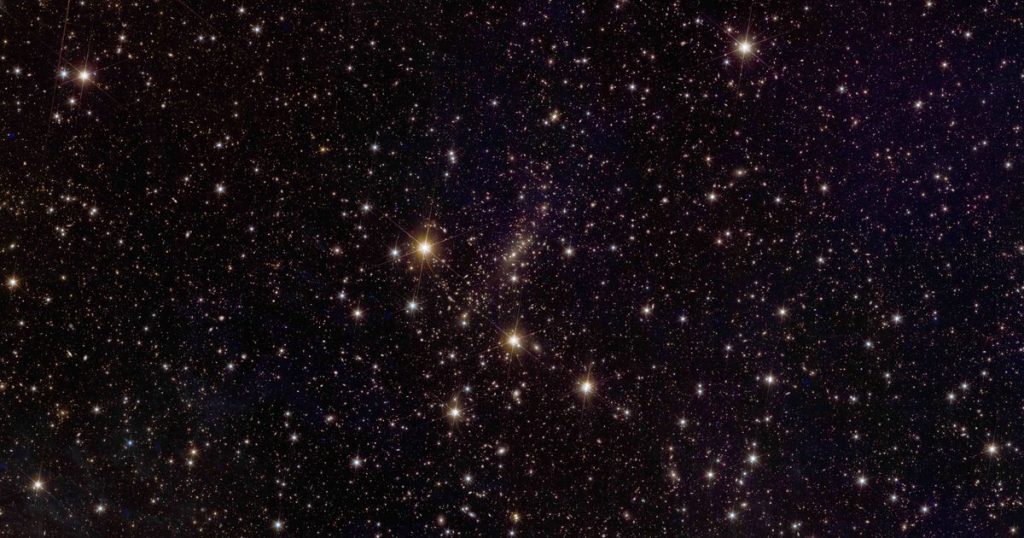Abell 2390, a group of galaxies about 3 billion light-years away. Euclid’s picture shows more than fifty thousand individual galaxies. Image: European Space Agency
Euclid will map billions of stars and galaxies in the coming years. The detailed measurements should provide further insight into the true nature of dark matter and dark energy, two mysterious components of the universe.
Dark matter does not produce any form of radiation, but it exerts gravity on its environment, thus influencing the evolution of the universe. Dark energy is believed to be responsible for the observed acceleration in the expansion of the universe.
The diameter of the Euclid telescope’s mirror is 1.2 meters, and it is equipped with two sensitive cameras, one for visible light and the other for infrared light. The images have roughly the same resolution as images from the Hubble Space Telescope, but they cover a much larger area of the sky.
M78 is a nebula of gas and dust located 1,350 light-years away in the constellation Orion where new stars are born. Many distant galaxies appear in the background. Image: European Space Agency
Amazing craftsmanship
“Euclid can capture a wide range of objects in the same image,” says Carol Mundell, ESA’s science director. “From faint to bright, from near to far, from the most massive galaxy clusters to small planets. […] This amazing diversity has led to many new scientific findings.
Last year, Euclid observed seventeen astronomical objects in a single 24-hour period, as part of its Early release notes. The resulting images show many millions of individual stars and galaxies. A special issue of the European magazine will be published soon Astronomy and astrophysicsIt contains the first scientific analyzes of Early releaseThe observations are described in ten articles.
For example, in the Perseus Cluster (a huge collection of thousands of galaxies 240 million light-years away), astronomers have detected the faint light of hundreds of billions of “orphan stars.” They are not part of a galaxy, but rather wander through intergalactic space. They likely come from small dwarf galaxies torn apart by tidal forces.
Euclid’s unparalleled observations of distant galaxies will be supplemented in the near future by measurements from the Vera Rubin Observatory, which will enter service next year in northern Chile, and from the future American Nancy Grace Roman Space Telescope.
Source: European Space Agency
Spiral galaxy NGC 6744 is located 30 million light-years away in the southern constellation Peacock. A satellite galaxy of a previously unknown galaxy has already been discovered in the image of Euclid, a small companion of NGC 6744. Image: European Space Agency

“Coffee buff. Twitter fanatic. Tv practitioner. Social media advocate. Pop culture ninja.”










More Stories
Which can cause an increase in nitrogen.
The Central State Real Estate Agency has no additional space to accommodate Ukrainians.
The oystercatcher, the “unlucky national bird,” is increasingly breeding on rooftops.